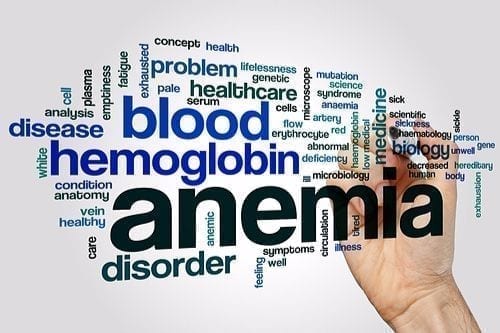
This post discusses Social Security Disability Benefits for Sickle Cell Anemia. If you, or someone you care for, has been assessed with Sickle Cell Disease, read on for how SSA will evaluate their claim for disability.
Types of Social Security Disability Benefits
SSA offers two types of benefits for disability claimants: Social Security Disability Insurance Benefits (SSDI) and Supplemental Security Income (SSI). SSDI is based on the credits from the work you have done in your life while SSI is a need based program.
You must be found disabled under SSA's Five Step Sequential Evaluation before you are entitled to either benefit. The first step is to apply for benefits online or at your local SSA office. If you are unable to work due to your Sickle Cell Anemia apply for SSI and/or SSDI benefits as soon as possible. Delay may cause you to lose benefits!
What is Sickle Cell Anemia?
Sickle cell disease is a group of hematological disorders that affect hemoglobin (the molecule in red blood cells that delivers oxygen to cells throughout the body). People with this disorder have atypical hemoglobin molecules called hemoglobin S, which can distort red blood cells into a sickle, or crescent, shape. Via NIH .
In the United States, Sickle Cell Anemia is the most common inherited blood disorder with an estimated 70,000 - 80,000 Americans having the disease. Sickle Cell should be distinguished from Sickle Cell Trait. Most people with the trait can pass it on to their children but do not experience the symptoms of Sickle Cell Disease.
Sickle Cell Anemia is the most common form of Sickle Cell Disease. Signs and symptoms of the disease usually begin in early childhood. Shortness of red blood cells (anemia which can cause severe fatigue) ; painful crises; swollen hands and feet (hand-foot syndrome); infections; delayed growth and vision problems are all possible symptoms. Via The Mayo Clinic
Treatments for Sickle Cell Anemia include immunizations and antibiotics (to prevent infections); supplements; blood transfusions; and pain management. Via WebMD. Bone marrow and stem cell transplants have shown promise in helping individuals with Sickle Cell. Via WebMD.
Other types of Sickle Cell Disease are Hemoglobin SB 0 (Beta Zero) Thalassemia, Hemoglobin SC Disease and Hemoglobin SB+ (Beta) Thalassemia (Via SickleCellSpeaks).
Is Sickle Cell Anemia considered a disability by SSA?
The Social Security Administration can evaluate your claim for disability benefits for Sickle Cell Disease in different ways. Listing 7.05, Sickle Cell Disease, or one of its variants is one way. This listing (which is difficult to meet) requires:
7.05 Hemolytic anemias, including sickle cell disease, thalassemia, and their variants (see 7.00C), with:
- Documented painful (vaso-occlusive) crises requiring parenteral (intravenous or intramuscular) narcotic medication, occurring at least six times within a 12-month period with at least 30 days between crises. OR
- Complications of hemolytic anemia requiring at least three hospitalizations within a 12-month period and occurring at least 30 days apart. Each hospitalization must last at least 48 hours, which can include hours in a hospital emergency department or comprehensive sickle cell disease center immediately before the hospitalization OR
- Hemoglobin measurements of 7.0 grams per deciliter (g/dL) or less, occurring at least three times within a 12-month period with at least 30 days between measurements OR
- Beta thalassemia major requiring life-long RBC transfusions at least once every 6 weeks to maintain life
Aplastic Anemia with bone marrow or stem cell transplantation is on SSA's Compassionate Allowance list (via Listing 7.17). Compassionate allowances are how SSA identifies cases that need to be processed quickly to get a claimant on benefits.
Since Sickle Cell affects your blood, it can affect different body systems. If your disease has severely affected a part of your body you can look at different listings to determine if you meet one of those. An example is Avascular Necrosis. The complete list of SSA's Adult Listings is found here. Most listings are difficult to meet. Your Sickle Cell Anemia may not meet the above listings, but you still may not be able to work due to fatigue, recurrent infections or painful crisis.
The SSA can also find you disabled based on the Medical Vocational Guidelines (SSA Grid Rules) if you are over 50 years of age and your Sickle Cell Anemia has affected your ability to stand, walk and carry. If you are unable to work, file your claim for disability benefits for Sickle Cell Disease as soon as possible.
The Bishop Law Firm represents Social Security Disability clients in Raleigh, Durham, Fayetteville, Cary, Rocky Mount, Wilson, Smithfield, Louisburg, Chapel Hill, Roanoke Rapids and surrounding areas in North Carolina. Call us today for a free case review, (919) 615-3095 .
Also read Overview of the Disability Process

